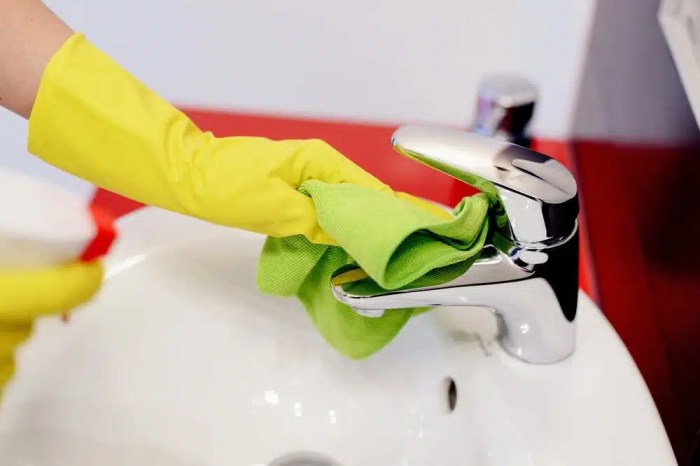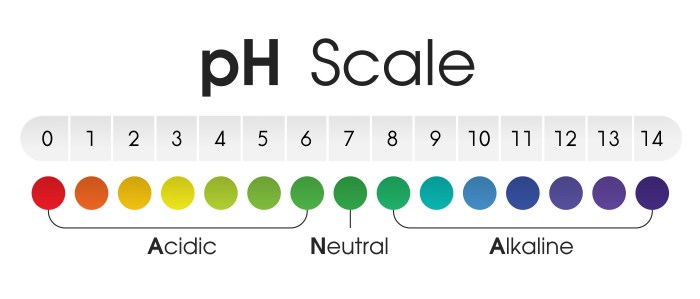How to clean microfiber? This comprehensive guide dives deep into the world of microfiber cleaning, from understanding the unique characteristics of this versatile fabric to mastering various cleaning methods for different applications. We’ll explore everything from pre-cleaning procedures and essential supplies to post-cleaning care and troubleshooting common issues. Get ready to transform your microfiber surfaces from drab to fab!
Microfiber, known for its softness and absorbency, is found in everything from clothing to upholstery and car interiors. Proper cleaning techniques are crucial to maintain its pristine condition and longevity. This guide will equip you with the knowledge and tools to tackle any microfiber cleaning challenge with confidence.
Introduction to Microfiber Cleaning: How To Clean Microfiber
Microfiber fabrics have revolutionized cleaning and personal care due to their unique properties. These fabrics, composed of extremely fine fibers, offer a superior cleaning experience compared to traditional materials. Understanding the characteristics of microfiber and its various applications is crucial for effective cleaning and maintenance.Microfiber’s exceptional cleaning ability stems from its unique structure. The incredibly small, interwoven fibers create a vast surface area, allowing for superior trapping of dirt, dust, and allergens.
This high surface area, coupled with the inherent static cling of the fibers, results in a powerful cleaning action that traditional materials often lack. This superior cleaning action is a key reason for its widespread use across many sectors.
Microfiber Fabric Characteristics
Microfiber fabrics are renowned for their exceptional absorbency and cleaning power. Their small fibers create a large surface area, enabling them to trap dirt, dust, and allergens more effectively than conventional materials. This high surface area, combined with their static-cling properties, leads to a superior cleaning experience.
Common Uses of Microfiber Materials
Microfiber materials are used in a diverse range of applications. From clothing and upholstery to car interiors and cleaning cloths, the versatility of microfiber is unmatched. The superior cleaning ability of microfiber makes it a popular choice in areas requiring thorough and efficient cleaning.
Importance of Proper Cleaning Techniques
Proper cleaning techniques are essential to maintain the performance and longevity of microfiber products. Improper cleaning can damage the delicate fibers, reducing their effectiveness and lifespan. Different types of microfiber materials require specific cleaning methods to prevent damage and maintain optimal performance. This highlights the need for tailored cleaning approaches.
Microfiber Material Cleaning Requirements
| Material Type | Typical Cleaning Requirements |
|---|---|
| Upholstery | Regular vacuuming and spot cleaning are essential. For tougher stains, use a specialized upholstery cleaner, following the manufacturer’s instructions carefully. Avoid harsh chemicals or abrasive scrubbing that can damage the fibers. |
| Clothing | Follow the care instructions on the garment label. Machine washing is often suitable, but delicate microfiber garments may require hand washing. Avoid using harsh detergents or bleach, which can damage the fibers and reduce the fabric’s absorbency. |
| Car Interiors | Regular vacuuming and wiping are crucial. For stubborn stains, use specialized car interior cleaners, ensuring they are safe for the microfiber material. Avoid using abrasive cleaners or harsh chemicals that can damage the fibers or leave streaks. |
Essential Cleaning Supplies

Choosing the right cleaning supplies is crucial for maintaining the vibrant look and longevity of your microfiber fabrics. Different microfiber types react differently to various cleaning agents, so understanding the nuances of each is key to effective cleaning. Using the wrong solution can damage the fibers, leading to discoloration, reduced absorbency, or even premature wear. This section will delve into the best cleaning solutions for different microfiber types, highlighting the importance of selecting appropriate cleaning agents.
Effective Cleaning Solutions for Microfiber
Microfiber fabrics are known for their exceptional absorbency and durability, but their cleaning requires careful consideration. The best cleaning solutions for microfiber depend significantly on the specific type of microfiber and the level of soiling. Water-based solutions are generally preferred for most everyday cleaning, but solvent-based solutions might be necessary for stubborn stains or specialized fabrics.
Importance of Appropriate Cleaning Agents
Using the correct cleaning agents is paramount to preserving the quality and appearance of microfiber fabrics. Incompatible cleaning solutions can damage the delicate fibers, causing them to lose their softness, absorbency, or even fade over time. A proper understanding of the specific microfiber type and the nature of the stain is crucial for selecting the appropriate cleaning agent.
Essential Cleaning Supplies for Microfiber
A well-stocked cleaning arsenal is essential for maintaining the beauty and functionality of your microfiber items. This includes specific detergents designed for microfiber fabrics, soft-bristled brushes for delicate cleaning, and high-quality microfiber cloths for efficient cleaning and drying. The selection of these tools should be tailored to the specific type of microfiber and the level of soiling.
Comparison of Cleaning Solutions
The effectiveness of cleaning solutions depends on the specific type of microfiber and the nature of the stain. Water-based solutions are generally preferred for everyday cleaning due to their mildness and environmental friendliness. Solvent-based solutions, while effective for tougher stains, can sometimes damage delicate microfiber fabrics. A careful evaluation of the situation is key to choosing the most appropriate cleaning method.
| Cleaning Solution | Pros | Cons |
|---|---|---|
| Water-based (e.g., mild dish soap, microfiber cleaner) | Gentle on fibers, environmentally friendly, cost-effective, suitable for most daily cleaning | Less effective for very stubborn stains or greasy soils, may require multiple applications |
| Solvent-based (e.g., specialized stain removers, rubbing alcohol) | Highly effective for tough stains like grease, oil, and ink | Potentially harmful to some microfiber types, may cause discoloration or damage if not used correctly, requires careful testing on inconspicuous areas first |
Pre-Cleaning Procedures
Preparing microfiber for cleaning is crucial for maintaining its pristine condition and extending its lifespan. Proper pre-cleaning steps minimize the risk of damage and ensure effective stain removal. Understanding the fabric type and care instructions is paramount for achieving optimal results.
Spot-Treating Stains
Spot-treating stains promptly is key to preventing them from setting into the microfiber fabric. Use a clean, white cloth or paper towel to blot up the excess liquid. Avoid rubbing, as this can spread the stain or damage the fibers. Apply a small amount of the appropriate cleaning solution directly to the stain, blotting gently with a clean cloth.
Repeat the blotting process until the stain is lifted.
Checking the Care Label and Fabric Type
Care labels provide vital information about the microfiber fabric’s composition and appropriate cleaning methods. Carefully examine the care label for specific instructions, such as the use of certain cleaning solutions, temperature restrictions for washing, and drying recommendations. Different microfiber fabrics react differently to cleaning solutions, so understanding the fabric type is essential. Polyester microfiber, for example, often tolerates more aggressive cleaning solutions than natural fiber microfibers.
Testing Cleaning Solutions on a Hidden Area
Before applying any cleaning solution to the entire microfiber surface, test it on a hidden area. This preliminary test will determine if the solution is safe and effective for the specific microfiber fabric. Look for a section of the fabric that is not readily visible, such as an inside seam or an inconspicuous area. Apply a small amount of the cleaning solution to the test area and observe the reaction.
If the solution causes discoloration or damage to the fabric, do not use it on the entire surface.
Removing Stubborn Stains
Stubborn stains on microfiber often require a more targeted approach. Here’s a step-by-step procedure for tackling persistent stains:
- Identify the Stain Type: Determine the nature of the stain (e.g., oil-based, food-based, or liquid). This will guide your cleaning strategy.
- Blot Excess: Carefully blot up excess liquid or solid material from the stain. Avoid rubbing, as this can spread the stain.
- Apply a Mild Detergent: If necessary, dilute a mild, pH-neutral detergent with water to create a cleaning solution. Test the solution on a hidden area first, as mentioned previously.
- Gently Blot with a Clean Cloth: Apply the cleaning solution to the stain and blot gently with a clean, white cloth. Avoid scrubbing, which can damage the microfiber fibers.
- Rinse with Water: Rinse the area with clean water, blotting any remaining cleaning solution. Be sure to blot excess water to avoid leaving a damp area.
- Repeat as Needed: Repeat steps 3-5 until the stain is completely removed. If the stain persists, consult a professional cleaning service.
Cleaning Methods for Different Microfiber Types
Microfiber fabrics, renowned for their versatility and absorbency, come in various types, each with unique characteristics that affect their cleaning requirements. Understanding these differences is crucial for effective cleaning and maintaining the quality and longevity of your microfiber items. Different cleaning methods are necessary for various microfiber surfaces, such as upholstery, clothing, and car interiors, to avoid damage or deterioration.Different microfiber types react differently to various cleaning solutions and methods.
The key to successful cleaning lies in selecting the appropriate approach tailored to the specific microfiber material and the nature of the soiling. Careful consideration of these factors prevents damage and ensures optimal cleaning results.
Cleaning Microfiber Upholstery
Microfiber upholstery is popular due to its soft texture and stain resistance. However, its delicate nature requires a gentle approach to avoid damaging the fibers.
- Spot Cleaning: For small spills, blot the affected area immediately with a clean, absorbent cloth. Avoid rubbing, as this can spread the stain and potentially damage the fibers. Apply a mild, microfiber-safe cleaning solution to the stain and blot again with a clean cloth.
- General Cleaning: Use a vacuum cleaner with a soft brush attachment to remove loose dirt and debris. For deeper cleaning, mix a mild detergent with lukewarm water (following the manufacturer’s instructions). Apply the solution to a clean microfiber cloth and gently wipe the upholstery. Ensure the upholstery is completely dry to prevent water spots.
- Deep Cleaning: If the upholstery shows significant soiling or stains, consider professional cleaning services. They have specialized equipment and techniques to handle tougher stains and deep cleaning effectively, preventing damage.
Cleaning Microfiber Clothing
Microfiber clothing is known for its durability and wrinkle resistance. Gentle cleaning methods are essential to maintain its appearance.
- Spot Cleaning: Treat any spills promptly by blotting the affected area with a clean, white cloth. Avoid rubbing, as this can cause damage or spread the stain. Use a mild detergent solution, diluted with water, and gently blot the stain. Rinse thoroughly with cool water and allow the garment to air dry.
- Hand Washing: For general cleaning, hand-wash the clothing in cool water using a mild detergent specifically designed for delicate fabrics. Avoid harsh scrubbing or twisting, as this can distort the fibers. Rinse thoroughly and allow the garment to air dry.
- Machine Washing: If the care label allows, machine wash the clothing on a gentle cycle with a mild detergent. Use a mesh laundry bag to protect the delicate fibers from damage during the wash cycle. Dry the garment on a low heat setting or air dry to prevent shrinkage or damage.
Cleaning Microfiber Car Interiors
Microfiber car interiors offer a luxurious touch to vehicles. Maintaining these interiors requires specialized care.
- Spot Cleaning: Treat spills promptly by blotting the affected area with a clean, absorbent cloth. Avoid scrubbing. Apply a microfiber-safe cleaning solution and blot again with a clean cloth. Ensure the interior is completely dry.
- Vacuuming: Regular vacuuming removes loose debris and dust. Use a soft brush attachment to avoid scratching the microfiber surface. Focus on crevices and corners.
- General Cleaning: Use a microfiber-safe cleaning solution and a clean microfiber cloth to wipe down the interior surfaces. Work in sections, starting with the least soiled areas and moving to the dirtier ones. Avoid excessive moisture to prevent water damage.
Comparison of Cleaning Methods
Different microfiber types, like upholstery, clothing, and car interiors, necessitate tailored cleaning strategies. Spot cleaning is universally crucial, but general cleaning and deep cleaning procedures vary based on the specific microfiber material. Gentle scrubbing is paramount to prevent fiber damage in all cases.
Cleaning microfiber furniture is a breeze! Just use a soft cloth and a gentle solution, avoiding harsh chemicals. Speaking of delicate plants, a similar approach is key for maintaining the beauty of your Monstera esqueleta. Checking out the monstera esqueleto care guide will give you some excellent tips on watering and light exposure, crucial for keeping it healthy and vibrant.
After all, a healthy plant and clean furniture are just a few steps away from a tidy home!
Cleaning Methods Table
Post-Cleaning Care
Giving your microfiber surfaces the best possible care after cleaning is crucial for maintaining their pristine condition and longevity. Proper post-cleaning steps ensure the fabric retains its softness, resists damage, and looks its best. This section dives deep into the essential post-cleaning procedures, emphasizing drying techniques, preventing water damage, and maintaining cleanliness.
Drying Microfiber Fabrics, How to clean microfiber
Proper drying is paramount to preventing wrinkles, stretching, and damage to microfiber. Different microfiber types react differently to drying methods. The most important consideration is avoiding excessive heat, which can damage the fibers.
- Air Drying: Air drying is generally the best method for most microfiber fabrics. Avoid direct sunlight, as prolonged exposure can fade colors. Lay the microfiber flat or hang it up on a padded hanger to prevent stretching. This method is gentle and preserves the fabric’s integrity. For example, delicately draped upholstery or delicate decorative pieces should be air-dried to maintain their aesthetic appeal.
- Low Heat Drying: Some microfiber fabrics are suitable for low heat drying in a clothes dryer. Always consult the care label for specific instructions. Using a low heat setting minimizes the risk of shrinking or warping the fabric. For example, some types of microfiber towels may be dried on a low heat setting, but it’s essential to understand the implications on the fabric.
Preventing Water Damage
Water damage can be a significant threat to microfiber. Understanding the appropriate drying techniques is crucial for preventing moisture-related problems.
- Avoid Over-Saturated Fabrics: Ensure that the microfiber is not excessively saturated with water. Wring out excess water gently before air-drying to prevent water spots or stains. For example, over-wetting a microfiber rug could lead to warping or discoloration over time.
- Proper Ventilation: Place microfiber items in well-ventilated areas during drying. Avoid placing them in humid environments, as this can prolong drying time and potentially lead to mildew or mold growth. For instance, a bathroom with poor ventilation could be detrimental to drying microfiber items.
Maintaining Cleanliness
Regular cleaning and maintenance help microfiber fabrics maintain their appearance and prevent dirt buildup.
Microfiber cleaning is surprisingly straightforward. Just remember to avoid harsh chemicals, and a gentle hand is key. To keep your cleaning supplies organized, consider creating a DIY orange garland, like this one! how to make orange garland. Once you’ve got your crafting sorted, you can easily return to the task of cleaning your microfiber, making sure it’s sparkling and spotless.
- Regular Spot Cleaning: Regularly spot clean microfiber surfaces to prevent dirt and stains from accumulating. This prevents the buildup of stubborn stains that can become difficult to remove later. This proactive approach is more effective than waiting for a major cleaning event.
- Vacuuming: Vacuuming microfiber surfaces helps remove dust, debris, and other loose particles. Using the appropriate attachments for your vacuum cleaner is essential to avoid scratching or damaging the surface. For example, a soft-bristled brush attachment would be more suitable for delicate microfiber upholstery than a hard brush.
Avoiding Harsh Chemicals and Excessive Heat
Microfiber fabrics are susceptible to damage from harsh chemicals and excessive heat. Proper cleaning techniques and mindful use of cleaning products can protect the fabric’s integrity.
Cleaning microfiber is a breeze – just use a gentle detergent and a soft cloth. However, if your toilet is making a hissing sound, that’s a different story entirely. Troubleshooting a hissing sound from your toilet might require a bit more than just a quick microfiber clean, like checking for leaks or a malfunctioning flapper, which could be linked to toilet making hissing sound.
Regardless, once you’ve tackled the plumbing issues, you can easily get back to your microfiber cleaning routine.
- Gentle Cleaning Agents: Use gentle cleaning agents specifically formulated for microfiber. Avoid harsh chemicals that could damage the fibers or cause discoloration. For instance, using a specialized microfiber cleaning solution is more appropriate than bleach, which can cause irreversible damage.
- Controlled Heat: Avoid using high heat settings during drying or cleaning. Excessive heat can shrink, warp, or fade the colors of the microfiber. This consideration is vital for maintaining the appearance and structural integrity of the fabric.
Post-Cleaning Steps for Different Microfiber Types
| Microfiber Type | Post-Cleaning Steps |
|---|---|
| Upholstery | Air dry, avoid direct sunlight, use a gentle cleaning agent, and consider professional cleaning for deep-cleaning needs. |
| Towels | Air dry or low heat dry, avoid excessive wringing, and consider a fabric softener for added softness. |
| Rugs | Air dry flat, avoid direct sunlight, and vacuum regularly to remove dust and debris. |
| Clothing | Air dry or low heat dry according to care label instructions, avoid harsh chemicals, and store properly to prevent wrinkles. |
Troubleshooting Common Issues
Microfiber fabrics, while lauded for their cleaning prowess, can sometimes present challenges during the cleaning process. Understanding potential problems and their solutions is crucial for maintaining the pristine condition of your microfiber items. Knowing how to address issues like stubborn stains or discoloration ensures your investment in microfiber lasts longer and remains effective.Troubleshooting microfiber cleaning issues requires a systematic approach.
Identifying the root cause of a problem is often the first step towards a successful solution. Different microfiber types react differently to cleaning agents and methods, so knowing the specific type of microfiber you’re working with is important. This section will delve into common problems, their potential causes, and effective solutions to restore your microfiber items to their best condition.
Identifying Stubborn Stains
Stubborn stains can be a frustrating aspect of microfiber cleaning. Understanding the source of the stain is vital to selecting the correct cleaning method. Some stains are more resistant to cleaning than others. For instance, oil-based stains might require specialized cleaning solutions.
Addressing Discoloration Issues
Discoloration can manifest in various ways, from subtle fading to more pronounced discoloration. The causes of discoloration are diverse, ranging from improper cleaning techniques to exposure to harsh chemicals or prolonged sun exposure. Understanding the specific cause will guide the chosen solution.
Dealing with Water Spots
Water spots can appear on microfiber after washing or drying, often resulting from inadequate drying or the use of improper cleaning agents. These spots can be particularly problematic on light-colored microfibers. The solution typically involves proper drying techniques and potentially, a specialized cleaning solution.
Understanding the Role of Cleaning Tools
Choosing the right cleaning tool is crucial for effective microfiber cleaning. Harsh scrubbing can damage the delicate fibers, leading to abrasion or pilling. Using the wrong cleaning tools can result in unintended consequences, like the spread of stains or the development of discoloration.
Troubleshooting Table
| Problem | Cause | Solution |
|---|---|---|
| Stubborn Stains (e.g., ink, grease) | Incorrect cleaning agents or inadequate pre-treatment | Use specialized stain removers, blot gently, and test in an inconspicuous area first. |
| Discoloration (e.g., fading, yellowing) | Exposure to harsh chemicals, improper drying, prolonged sun exposure | Avoid harsh chemicals. Air dry, or use a low heat setting in the dryer. Consider using a color-safe cleaning solution. |
| Water Spots | Improper drying techniques, use of incorrect cleaning agents | Ensure complete drying. Use a microfiber towel to absorb excess moisture and air dry if possible. Avoid harsh scrubbing. |
| Damage to Fibers (pilling, abrasion) | Using abrasive cleaning tools or excessive scrubbing | Use gentle cleaning tools, avoid harsh scrubbing. Consider a microfiber-specific cleaner or cleaner recommended by the manufacturer. |
Illustrative Examples
Microfiber fabrics, with their unique properties, demand specific cleaning techniques. Understanding how to handle various microfiber types and common cleaning scenarios is crucial for maintaining their appearance and longevity. This section provides practical examples, emphasizing the importance of tailored cleaning methods for optimal results.Different microfiber fabrics have different compositions and structures, affecting their cleaning needs. Proper cleaning methods prevent damage and maintain the fabric’s pristine condition.
Microfiber Sofa Cushions
Microfiber sofa cushions are incredibly popular for their soft texture and easy-care qualities. However, their delicate nature necessitates a gentle approach to cleaning.
- Removing Food Spills: Act quickly. Blot up any excess liquid with a clean, absorbent cloth. Avoid rubbing, which can spread the spill and potentially damage the fibers. Use a mild, microfiber-safe cleaner diluted according to the product instructions. Apply the solution with a clean, soft cloth, blotting gently to avoid saturating the cushion.
Allow the cushion to air dry completely before replacing it.
- Treating Pet Stains: Again, prompt action is key. Blot up the stain with a clean cloth. Avoid scrubbing, which can embed the stain deeper. For tougher pet stains, use a specialized pet stain remover designed for microfiber. Follow the product instructions carefully, and test the cleaner on an inconspicuous area first to ensure it doesn’t damage the fabric.
Rinse thoroughly with cool water and air-dry completely.
Microfiber Curtains
Microfiber curtains are a popular choice for their durability and light-filtering properties. Their smooth surface makes them susceptible to dust and dirt accumulation.
- Dusting: Regular dusting is essential to maintain their cleanliness. Use a soft-bristled brush or a microfiber duster to remove dust particles gently. For tougher grime, use a slightly damp microfiber cloth to wipe the curtains. Never use harsh chemicals or abrasive cleaners.
- Removing Stains: For stubborn stains, use a mild, microfiber-safe cleaner diluted with water. Test the solution in an inconspicuous area first. Apply the cleaner with a soft cloth, blotting gently to avoid streaking. Allow the curtains to air dry completely.
Microfiber Car Seats
Microfiber car seats provide a comfortable and stylish interior. Their smooth surface, however, can easily attract dirt and spills.
- Removing Food Spills: Promptly blot up any spilled liquids or food particles with a clean, absorbent cloth. Avoid scrubbing. Use a mild, microfiber-safe cleaner diluted with water. Apply the cleaner to a clean, soft cloth and blot the affected area. Allow the seats to air dry completely.
- Treating Pet Stains: For pet stains, use a pet stain remover formulated for microfiber fabrics. Follow the product instructions meticulously. Ensure complete drying to prevent odor retention and further damage.
Importance of Correct Cleaning Methods
Using the wrong cleaning methods can damage microfiber fabrics, leading to irreversible damage and a shortened lifespan. Harsh chemicals, excessive scrubbing, or improper drying can cause fading, discoloration, or even permanent shrinkage.
The delicate nature of microfiber necessitates a careful approach to cleaning. Always test cleaning solutions on a hidden area before applying them to the entire surface. Follow product instructions and use appropriate cleaning tools for each type of microfiber. Proper cleaning methods preserve the integrity of the fabric and its beauty.
Impact of Improper Cleaning
Improper cleaning methods can significantly impact microfiber fabrics. Excessive moisture can cause the fibers to shrink or distort, leading to uneven surfaces and a compromised aesthetic. Harsh chemicals can cause discoloration or fading, while abrasive cleaning can damage the delicate fibers. Using the correct cleaning method ensures the fabric’s longevity and retains its original condition.
Final Summary

In conclusion, cleaning microfiber effectively requires understanding its unique properties and tailoring your approach to the specific type. From pre-cleaning steps to post-care routines, this guide provides a complete solution. By following the detailed methods and avoiding common pitfalls, you can maintain the beauty and functionality of your microfiber items for years to come. Remember, prevention is key – proper care and maintenance will keep your microfiber looking its best!






